Hybrid V2X OBU (ON BOARD UNIT)
[ps2id id=’section-1′ target=”/](Vehicle-to-everything). V-tron’s mission is to make roads safer, not only for drivers of motorized vehicles, but also for the most vulnerable road users – pedestrians and cyclists, and also for the people who help us use the roads safely every day, such as road workers, road inspectors and employees of amber and blue light vehicles.
V2X has the potential to reduce up to 80% of all collisions. V2X allows each road user to receive personalized advice and alerts so they can move more safely and comfortably. It can also make better use of infrastructure, reducing congestion and pollution. We make roads safer, more productive and, above all, more attractive.
At V-tron, we believe that these kinds of new applications should not only be reserved for new vehicles. On the contrary, if you really want to make a difference, you have to make the existing arsenal suitable for V2X. We have a suitable V2X solution for all makes, types and construction years. In our view, a valuable option, both for the individual and for the total mobility eco-system.
V-tron brings its V2X developments to the market via an integrated OBU, which is suitable for all standardized communication channels.
- 3/4G Cellulair
- ETSI-ITS-G5 (WiFi-p 802.11-p)
- LTE-V C-V2X (5G short range)
The reason V-tron supports all these communication technologies is, we want to use the best channel for the particular use-case. It is not the technology that determines the success of a use-case. In addition, these technologies give the ability to function as each other’s backup or validation mechanism. So is a digital alert hanging in the air? Then we ensure that the user can always receive it, regardless of which communication technology is being used.
V-tron’s solution, is used in Europe, on a project basis, to validate C-ITS chains, develop new services and for deployment in the existing fleet. The HMI of V-tron can also be programmed itself, using the standardized API. This allows developments to continue, which would otherwise risk going under behind a vendor lockin. The developments of V-tron are offered through the development platform “ZOOF”. This also makes it possible to benefit from each other’s developments or to accelerate completely new developments.
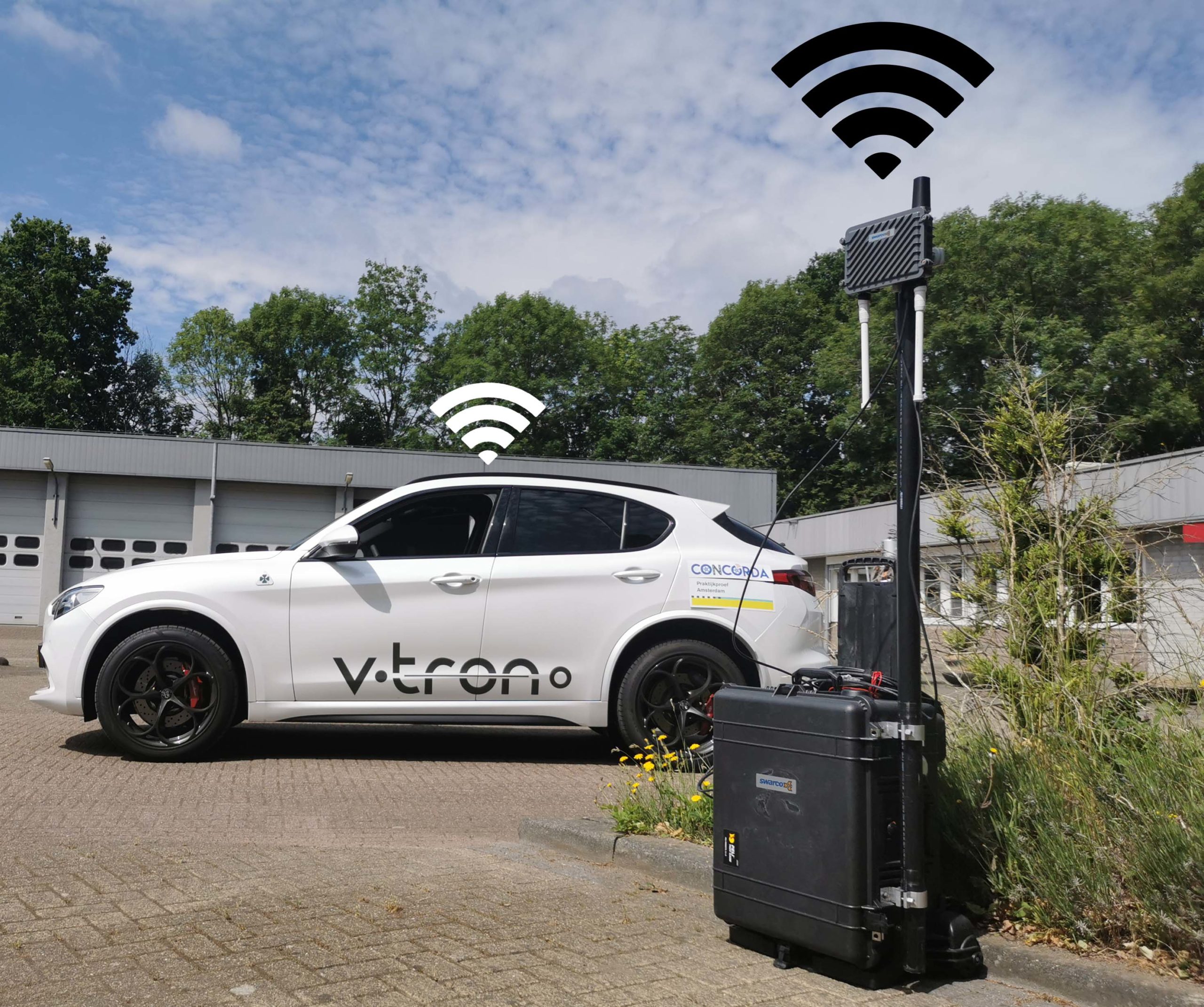

C-V2X (LTE-V)
The latest communication standard, 5G, also has the option for short-range communication. This standard includes the ability, without operator intervention, to exchange messages between objects for V2X./p>

CELLULAIR
This is the so-called long-range communication link, within the V2X spectrum. 1-to-1 communication between vehicles or roadside is also possible with this, through an extensive intelligent chain of links that transmit the data. Many applications do not need fast 1-to-1 communication and can therefore be handled perfectly well via this channel.

WIFI-P (C-ITS-G5)
The ETSI-ITS-G5 standard (2004), also often popularly called WiFi-p, is the most well-known variant for short-range V2X applications. With this technology, virtually all V2X development has been done and tested in recent years. This technology is widely accessible and quite affordable.
USE CASES
Through the above technologies, V-tron is able to assist the user while driving. For this purpose, we have developed the following applications.
ZOOF C-ITS
ZOOF C-ITS (Cooperative-Intelligent Transport Systems) is the service that advises you, the road user, on the optimal driving speed, lane availability and potential hazards on the road.
The ZOOF C-ITS service is still in the development phase. The app has been extensively tested on the European road network.
With ZOOF C-ITS, a communication link is established with the roadside and passing vehicles via an OBU (on board unit). In this way, personalized advice is provided regarding the situation at hand.
For example, when approaching/entering a traffic jam on the road. The traffic jam is not yet perceptible to the driver but already communicated to ZOOF via the data. The driver is advised to reduce his speed and move up a lane because further down the road his current lane is closed. This allows the driver to anticipate traffic in front of him early and avoid potentially dangerous situations.
That is ZOOF: smart driving together.
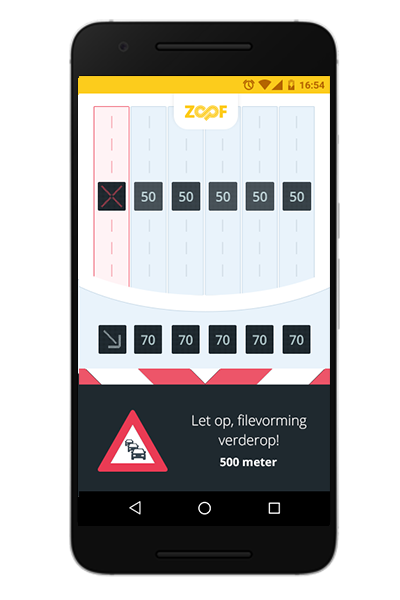
USECASES ZOOF C-ITS
Roadworks
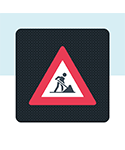
Traffic jam

Bad road
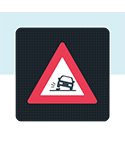
Warning! Accident
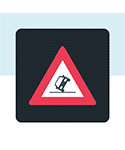
Bad weather
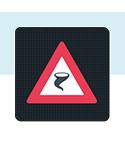
Salting
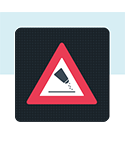
Animal(s) present on the road
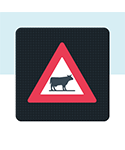
Human(s) present on the road
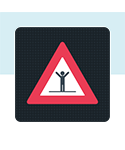
ZOOF GLOSA
ZOOF GLOSA (Green Light Optimized Speed Advice) is the service that advises road users within urban areas on the optimal driving speed, lane availability, potential road hazards and time to green.
This version of ZOOF is still in the development phase. The app has been extensively tested on the European road network.
With ZOOF GLOSA, an OBU (on board unit) establishes a connection to WiFi-P G5 and the 4G/LTE network that communicates with the iVRi’s (intelligent traffic control systems) at the roadside and passing vehicles.
In this way, personalized advice is given on the current situation, such as the traffic light will turn green in 5 seconds. This prevents unnecessary irritation at a traffic light and gives the driver a clear picture of the current traffic situation.
When approaching the traffic light, ZOOF provides an advisory speed to achieve the green wave. This prevents unnecessary braking and acceleration of vehicles, This reduces harmful substance emissions.
That is ZOOF: smart driving together.
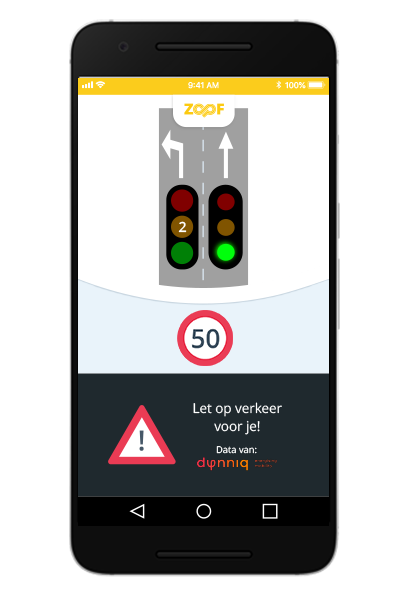
USECASES ZOOF GLOSA
Speed advice
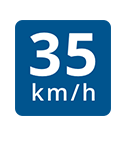
Maximum speed
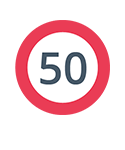
Time to green
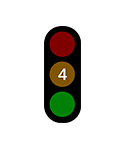
lane advice

ISA
ISA in practice amounts to influencing the vehicle’s speed to the prevailing speed limit (or a dynamically set “safe” speed). Previous ISA experiments about 20 years ago required special modifications and development of both cars and roadside equipment. This ISA trial is a 2.0 version, where we use modern engineering and technology and combine them into an innovative solution. Many newer cars already have some form of ISA technology on board, also navigation and other data sources can already be used for speeds. By combining these systems, the car ‘knows’ what the prevailing speed limit is and the speed is ‘automatically’ limited. (Too) fast driving can be countered by ‘hard’ intervention in vehicle technology, or ‘softer’ by drawing the driver’s attention to it, with visual and/or audible signals. This is also called a closed and an open system. For this trial, we choose a more closed system.
Advantages of ISA:
- Safety: driving (too) fast is one of the main causes of accidents and the outcome of a speeding accident is also more serious.
- Quality of life: driving faster, especially in an urban environment, causes a lot of inconvenience and is also experienced as ‘threatening’ (subjectively unsafe).
- Environment: driving fast is (much) more polluting. For example, at 130 instead of 120 km/h, 13% more CO2 is emitted. European research indicates that with ISA up to 8% CO2 is saved.
- Traffic flow: harmonization of speeds and choosing an optimal speed, for example in merging situations.
- Driving assistance: ISA can be seen as supporting the driving task and as a step towards the self-driving car.
ISA can be seen as supporting the driving task and as a step towards the self-driving car.
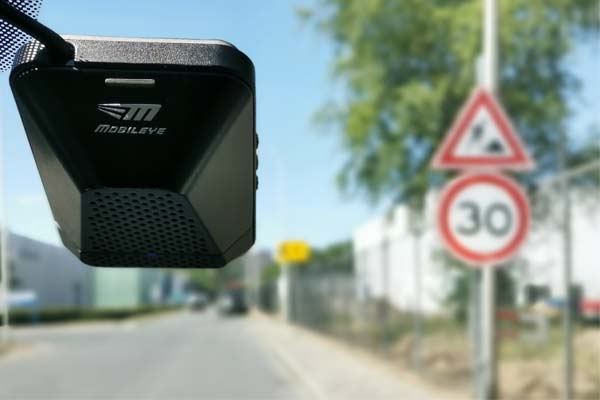
Objective of the ISA trial: using an aftermarket ISA instrument, developed by V-Tron in Deventer, which cleverly assists the driver in adhering to the alternating speed limits on a route, demonstrate through a TNO-supervised study that traffic safety improves substantially; that the motorist’s behavior when it comes to adhering to the applicable speed limit changes positively.
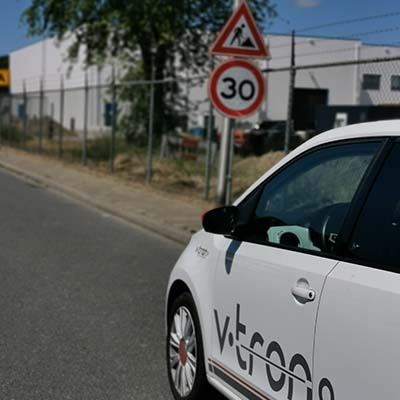
USECASE: ISA (INTELLIGENT SPEED ASSISTANT)
Speed advice

Maximum speed

